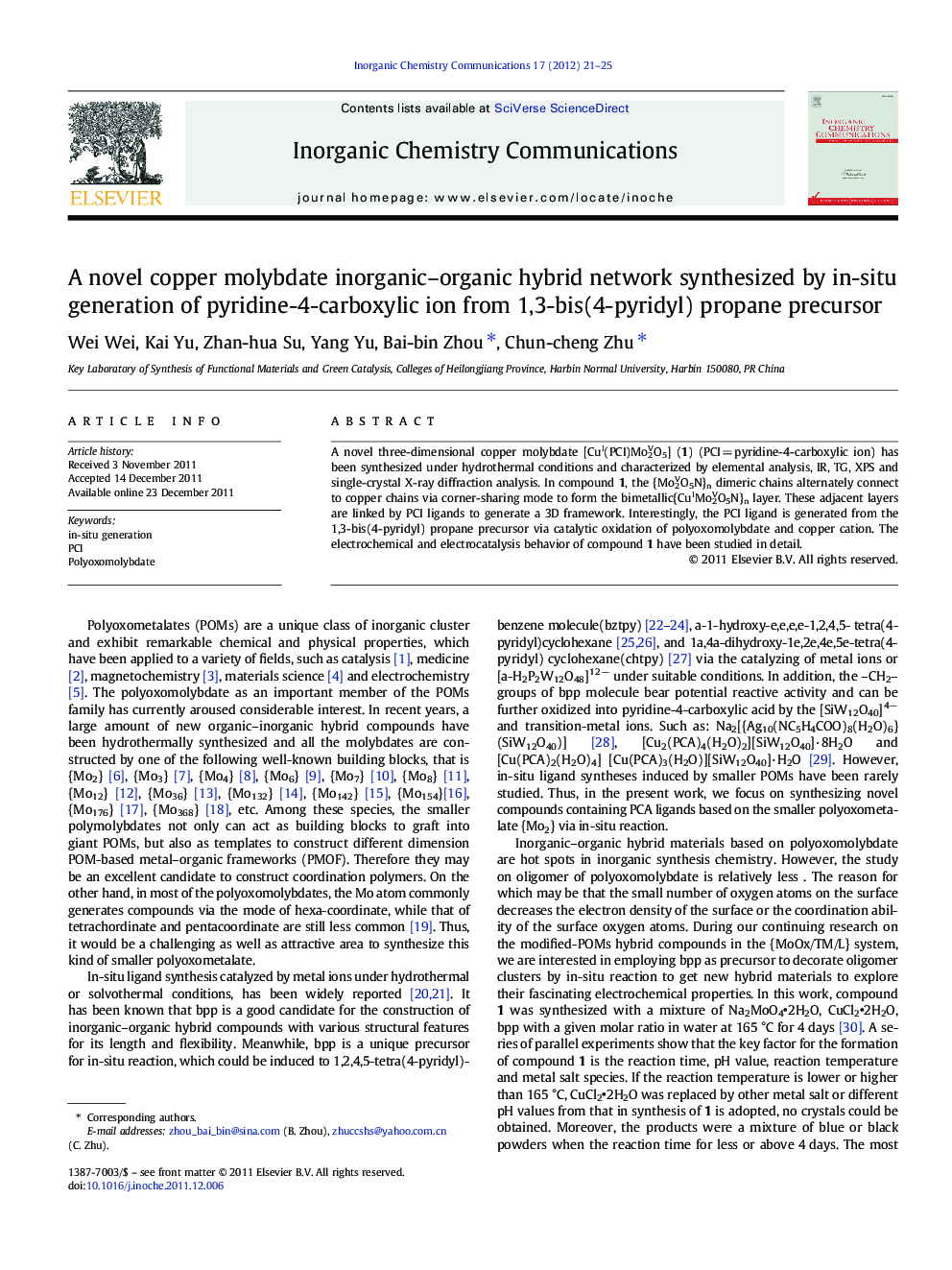| Article ID | Journal | Published Year | Pages | File Type |
|---|---|---|---|---|
| 1302049 | Inorganic Chemistry Communications | 2012 | 5 Pages |
A novel three-dimensional copper molybdate [CuI(PCI)Mo2VO5] (1) (PCI = pyridine-4-carboxylic ion) has been synthesized under hydrothermal conditions and characterized by elemental analysis, IR, TG, XPS and single-crystal X-ray diffraction analysis. In compound 1, the {Mo2VO5N}n dimeric chains alternately connect to copper chains via corner-sharing mode to form the bimetallic{CuIMo2VO5N}n layer. These adjacent layers are linked by PCI ligands to generate a 3D framework. Interestingly, the PCI ligand is generated from the 1,3-bis(4-pyridyl) propane precursor via catalytic oxidation of polyoxomolybdate and copper cation. The electrochemical and electrocatalysis behavior of compound 1 have been studied in detail.
Graphical abstractThe {Mo2VO5N}n dimeric chains alternately connect to copper chains via corner-sharing mode to form the bimetallic{CuIMo2VO5N}n layer. These adjacent layers are linked by PCI ligands to generate 3D framework.Figure optionsDownload full-size imageDownload as PowerPoint slideHighlights► The {Mo2VO5N}n chains connect to copper chains to form the{CuIMo2VO5N}n layer. ► The adjacent {CuIMo2VO5N}n layers are linked by PCI to generate 3D network. ► The PCI is generated from the 1,3-bis(4-pyridyl) propane via in-situ generation. ► 1-CPE displays unique redox properties and good electrocatalytic activity.
